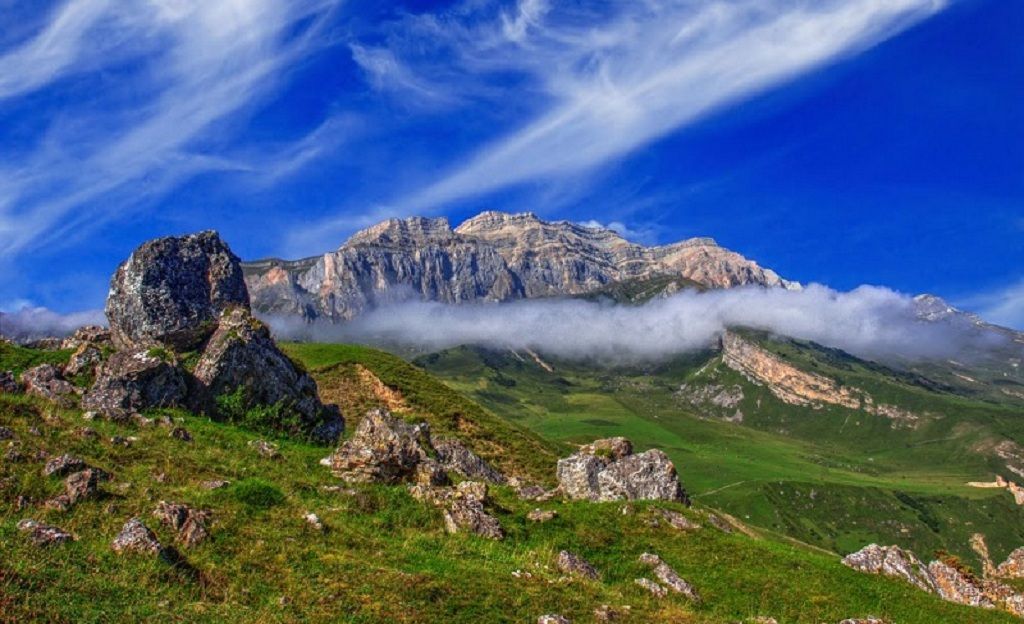Azerbaijan’s varied landscapes are home to an impressive variety of flora, fauna, and even just beautiful spots to discover. Azerbaijan’s nature is defined by the waters of the Caspian Sea, the peaks of the Caucasus Mountains, with the rich valleys and forests that lie in between. Despite some severe destruction during Soviet times, nature in Azerbaijan is now under the protection of the government, and nature reserves keep the most amazing sights safe for generations to come. The higher elevations are dominated by mountain peaks and thick forests, while the lower elevations are grasslands and desert.
The Caspian Sea is the world’s largest lake, home to numerous species of plants and animals. Sturgeons and sturgeon caviar from the Caspian Sea are popular in restaurants, as are other types of fish. Seagulls, turtles, and seals can also be found in the Caspian Sea, and in ancient times, dolphins used to live in the sea. The wetlands and rich shores around the Caspian Sea are beneficial for Azerbaijan’s nature, and the beaches and protected areas are perfect for visitors.
The Caucasus Mountains are known for their forbidding profile and spectacular landscapes. The lower slopes have thick forests, but at higher altitudes, the landscape is dominated by sparse plains and rocky peaks. Wolves, bears, deer, wild goats, and large cats can be found in the more isolated areas, and though cheetahs, tigers, and lions used to roam the slopes, they went extinct long ago. In the winter, heavy snowfall makes for great skiing, and there are several ski resorts in the high mountains. In the summer, people use the more calm parts of Azerbaijan’s nature and mountains for picnicking and hiking.
Central Azerbaijan is part of the drainage basin of the Kura River. This river starts in Turkey, then crosses Georgia before flowing through the broad valley between the Greater and Lesser Caucasus Mountains in Azerbaijan. At higher elevations, there are meadows in this valley, whereas lower elevations can be semi-deserts. Though there used to be forests along the riverbanks, today there are mostly farms. There are also some important wetlands as the Kura reaches the Caspian Sea, home to birds and other wildlife. The most important and fragile natural places in Azerbaijan have become state parks and national parks. Planetree forests, mud volcanoes, glaciers, deserts, and lakes are all under the protection of the park system, including some of the most unique and interesting natural formations in Azerbaijan. In recent years, more areas have become a state or national park, and even existing parks have been expanded to protect more territory. Gobustan State Reserve and Absheron National Park aren’t far from Baku, whereas other parks are in deeper and more isolated parts, protecting more untouched areas.






